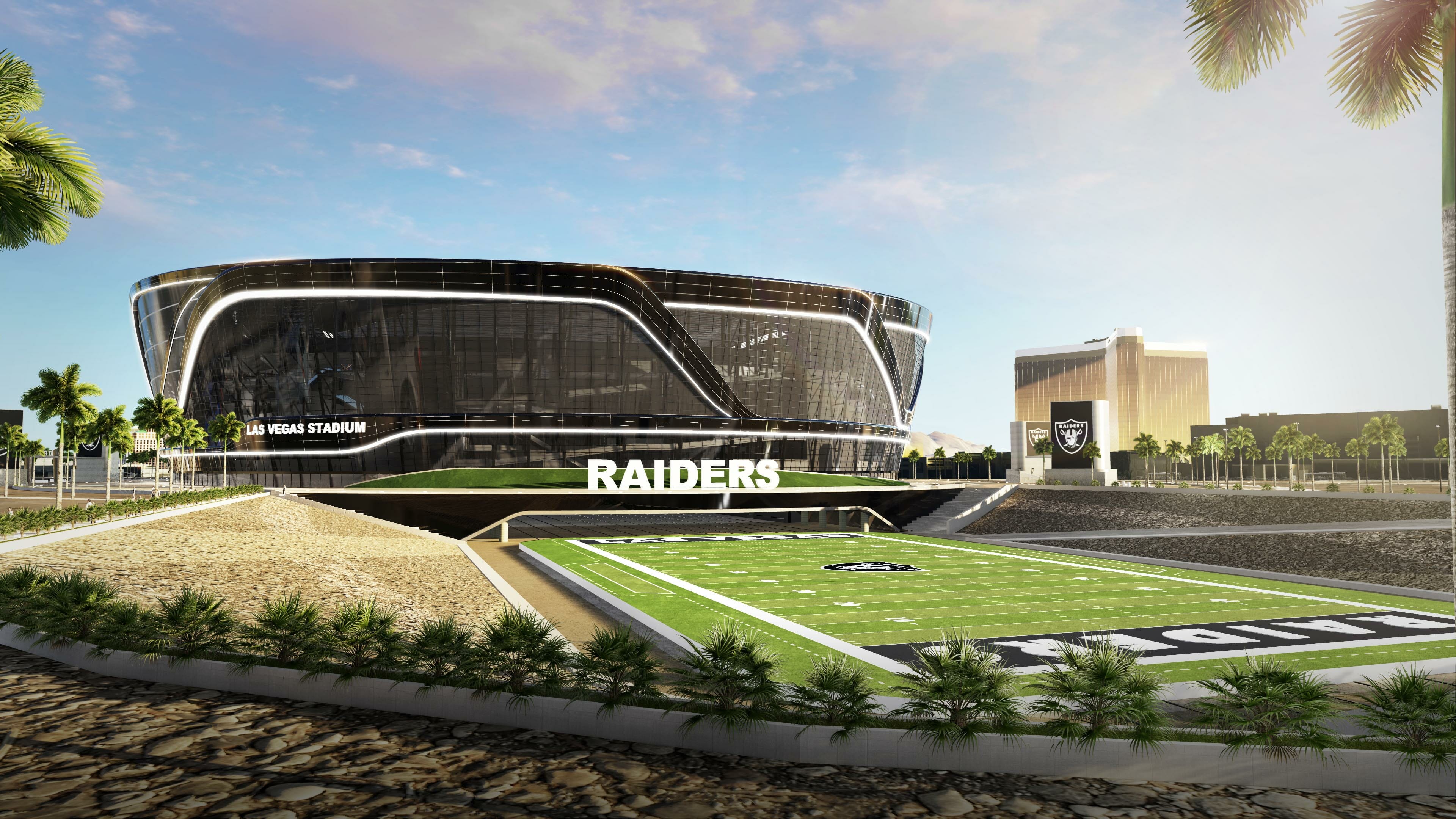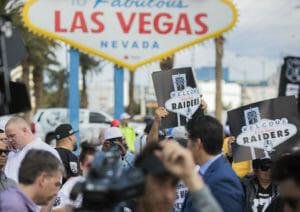Stadium Authority contemplates updated lease agreement, faces mountain of work in coming months

Lots to do and barely enough time.
That was the theme that emerged during the Las Vegas Stadium Authority’s first meeting since the NFL owners approved the Oakland Raiders’ move to the desert last month. With the team eyeing a move no later than the 2020 football season, that leaves less than three years for stadium plan approvals and construction.
The Stadium Authority spent the bulk of Thursday’s meeting examining an updated draft of the lease agreement with the team. Although it’s only the second draft revealed to the public, it’s actually the eleventh or twelfth version of the document, said Mark Arnold, a Houston-based attorney who serves as the board’s counsel.
The Stadium Authority has not approved the nearly 100-page lease agreement, which is just one of several key documents that need approval before shovels hit the ground. It could take several months before the Stadium Authority and Raiders finalize and approve all the necessary agreements.
In the meantime, here are some takeaways from Thursday's meeting:

Post-relocation approval enthusiasm: The Raiders launched a deposit campaign for personal seat licenses (PSLs) the day after NFL owners approved the team’s move to Las Vegas.
Roughly 23,000 people put down $100 deposits on the first day, and that number has doubled since then, Raiders President Marc Badain said. The deposit essentially reserves a spot for people interested in purchasing a PSL and season tickets at the forthcoming Las Vegas stadium. (The Minneapolis StarTribune reported that PSLs at the Vikings’ new stadium, which opened last year, ranged in price from $500 to $9,500 per seat.)
The list includes a good chunk of Las Vegas-area residents as well as people from neighboring states such as California, Utah, Arizona and more distant locals, including Canada, Badain said.
“They’re coming in from all over the place so I think that speaks well for the tourism effect that we’re all hoping to achieve here,” he said.
The Raiders plan to hold a draft-day event at the famous “Welcome to Fabulous Las Vegas” sign on April 29.
A rent-free tenant: The Raiders will pay no rent for occupying the stadium, according to the new draft of the lease agreement. The initial draft of the lease had called for a $1 annual rent payment by the Raiders.
Stadium Authority Chairman Steve Hill said the no-rent policy shouldn’t come as a surprise to anyone following the stadium discussions over the last year.
“It has been forever,” he said. “You’ll notice we are very consistent with that. We are upholding the deal we worked through at the tourism infrastructure committee, and that remains the case today.”
Arnold said the Raiders’ financial contribution to the construction project amounts to rent.
The 65,000-seat stadium is expected to cost roughly $1.9 billion, with $750 million of that generated through the hotel room tax increase approved by state lawmakers last year. That leaves the Raiders responsible for securing financing for the remaining $1.15 billion. The team likely will put $100 toward the project and pay the rest via a $200 million NFL loan, an estimated $200 million from PSL sales and a $650 million loan from Bank of America.

A revenue win for the Raiders: While the no-rent clause has garnered much public criticism, the line directly below it in the lease outlines an arguably better advantage for the team: The Raiders will receive all revenue generated within the stadium.
The draft lease states that the team has “all naming, signage, marketing, entitlement, trademark, copyright and other rights” and will retain “all revenues generated or derived” from the premises.
The lease, however, discourages any names that would promote firearms or “cause embarrassment” to the county or Stadium Authority. The latter includes the use of obscenities, racial epithets, overt political references or names related to sexually oriented businesses, among other things.
State officials working on the stadium deal have long said the public will benefit through job creation, an expected increase in tourists and tax dollars generated from stadium-related activities or jobs.
Unresolved issues: The Stadium Authority and Raiders still are working through a number of issues that appear in the lease agreement. Chief among them is how to ensure the facility provides the greatest return on investment to the community.
The public benefits, in theory, if the stadium hosts frequent events and draws new visitors to town as a result. The question being negotiated by the two parties boils down to this: If the Stadium Authority’s performance goals aren’t being met, what happens?
“It’s one of the toughest items because the law says the Raiders will have full operational control of the stadium,” Hill said after the meeting.
The Raiders and Stadium Authority staff are drafting language of that concept, Arnold said.
The parties also need to hash out cost projections for stadium maintenance and capital improvements that will be necessary over time. The Raiders will be responsible for the bulk of that expense, but the Stadium Authority will have some hotel tax revenue to contribute toward that effort.
“The Raiders have to make up whatever we can’t contribute,” Hill said.
For financial planning purposes, Hill directed Stadium Authority staff to research how much money was necessary for upkeep and improvement efforts at other NFL stadiums.
The bottom line: The Stadium Authority, which owns the public facility, wants to wind up with a well-preserved asset by the time the 30-year lease ends.

A separate but private stadium-related meeting: In another part of the Clark County Government Center, state and local officials met privately with Raiders representatives, who revealed more details about the development plans and timeline.
Clark County Commission Chairman Steve Sisolak characterized the meeting, which overlapped with the Stadium Authority meeting, as an overview that touched on infrastructure, design, development, parking and traffic issues related to the stadium. The packed meeting room consisted of people from nearly every county department that exists and some state departments as well as eight to 12 members of the Raiders organization, he said.
The Raiders officials showed renderings of the stadium design and discussed potential developers, Sisolak said. He declined to say whom the team named as possible development partners. Meeting attendees also were not allowed to photograph any of the stadium renderings.
Sisolak said the meeting underscored the complexity of the project, which has a timeline so precise he called it “sobering.”
“This can’t come in behind,” he said of the project. “If it comes in behind, they don’t have a place to play in 2020. That’s not an option. Whatever we have to do to make it work, we have to make it work.”
Feature photo caption: Photo rendering courtesy of MANICA Architecture.
